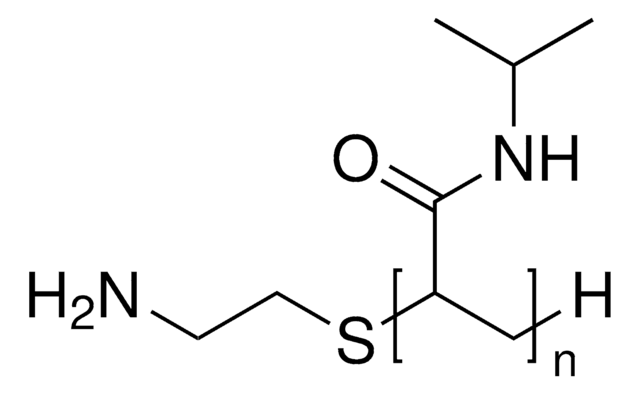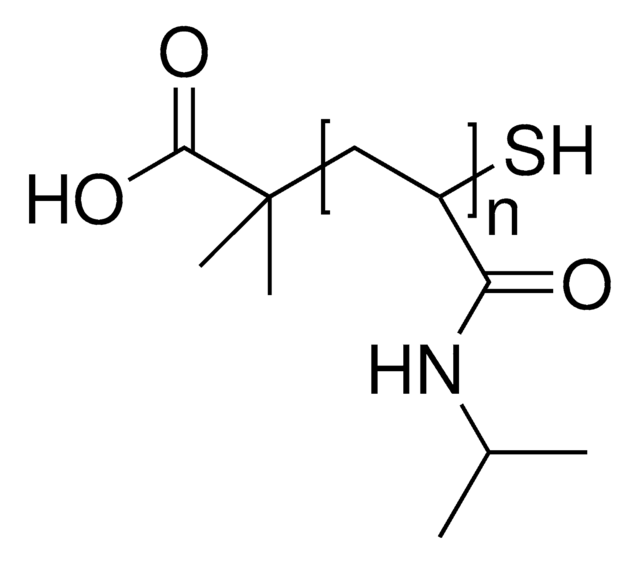Kluczowe dokumenty
724459
Poly(N-isopropylacrylamide), carboxylic acid terminated
average Mn 10,000
Synonim(y):
NIPAM polymer, PNIPAM-COOH, Polyacrylamide, functionalized polyNIPAM, functionalized polyacrylamide, polyNIPAM
Wybierz wielkość
1330,00 zł
Wybierz wielkość
About This Item
1330,00 zł
Polecane produkty
Formularz
powder
masa cząsteczkowa
average Mn 10,000 by GPC (THF w/ 5%TEA, PS, RI)
average Mn 10,000
mp
>300 °C
Szukasz podobnych produktów? Odwiedź Przewodnik dotyczący porównywania produktów
Zastosowanie
Kod klasy składowania
11 - Combustible Solids
Klasa zagrożenia wodnego (WGK)
WGK 1
Temperatura zapłonu (°F)
Not applicable
Temperatura zapłonu (°C)
Not applicable
Wybierz jedną z najnowszych wersji:
Masz już ten produkt?
Dokumenty związane z niedawno zakupionymi produktami zostały zamieszczone w Bibliotece dokumentów.
Produkty
Poly(N-isopropylacrylamide), or PNIPAM, is a stimuli-responsive polymer that responds to changes in pH and temperature and has a LCST around 32 C.
Tissue engineering has become a key therapeutic tool in the treatment of damaged or diseased organs and tissues, such as blood vessels and urinary bladders.
Inżynieria tkankowa stała się kluczowym narzędziem terapeutycznym w leczeniu uszkodzonych lub chorych narządów i tkanek, takich jak naczynia krwionośne i pęcherze moczowe.
By altering the physicochemical properties, smart or intelligent drug delivery systems can be designed to deliver therapeutic molecules on-demand. Learn more about the application of stimuli-responsive materials in drug delivery.
Active Filters
Nasz zespół naukowców ma doświadczenie we wszystkich obszarach badań, w tym w naukach przyrodniczych, materiałoznawstwie, syntezie chemicznej, chromatografii, analityce i wielu innych dziedzinach.
Skontaktuj się z zespołem ds. pomocy technicznej





